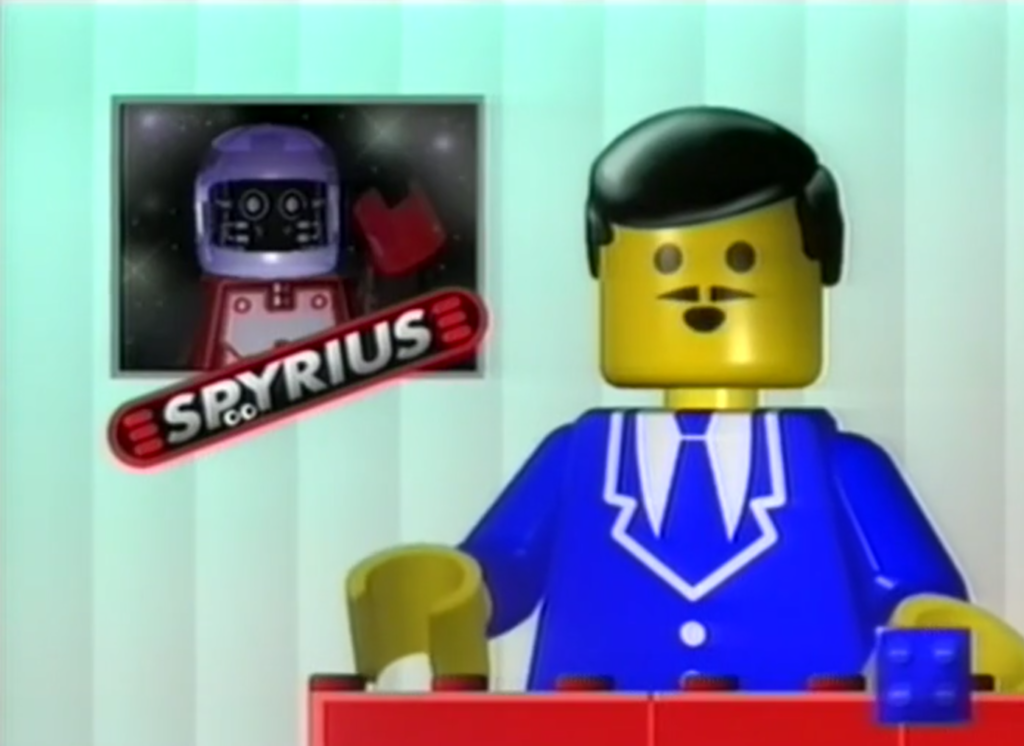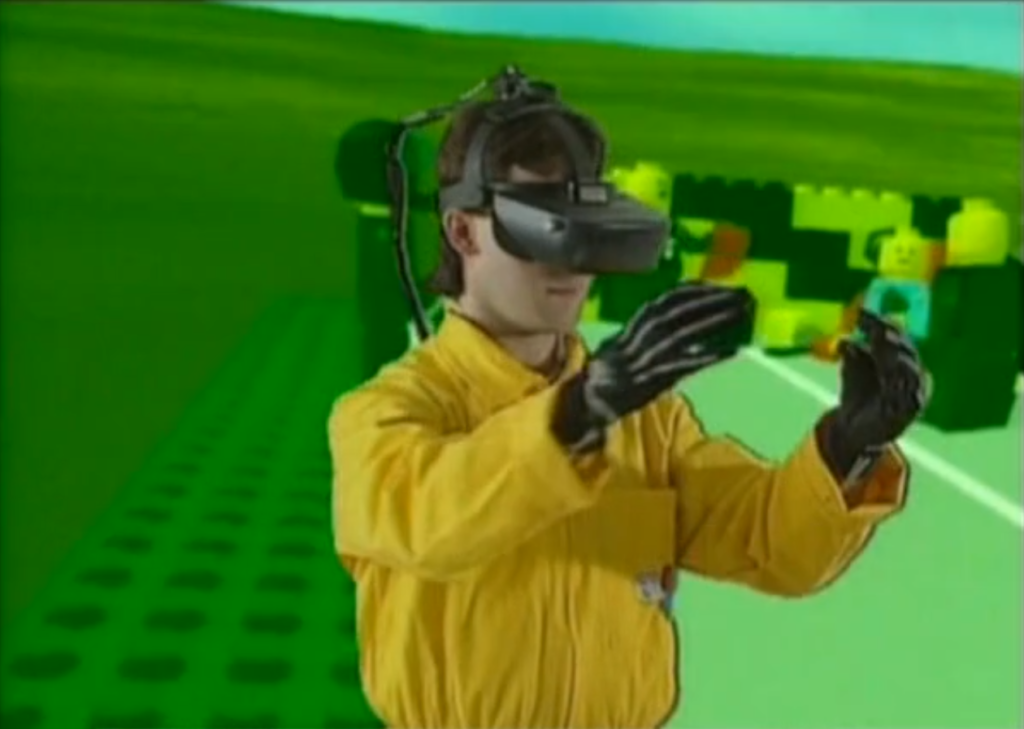Inside the LEGO Group’s Secretive Strategic Product Unit Darwin
March 24, 2021The LEGO Group’s biggest early exploration into the digitization of the brick was started by a group of friends and their wild dream to create a computer animated LEGO® movie at a time before Pixar’s amazing films like Toy Story dominated theaters.
Despite the lack of any high-end equipment, despite being years ahead of their time and initially getting a firm no from the LEGO Group, this band of friends persevered and were ultimately brought on to start a skunkworks LEGO Group R&D unit that would propel the company into its future of video games, movies, and an adept blending of the digital and physical.
It all started in the crisp Swiss air above Lake Thun near Bern, Switzerland, in the early 90s. An eclectic mix of dreamers that included a NASA scientist, a rock and roll roadie, and a former typography apprentice were brought together by the singular vision of a nature-loving wandering scholar who called himself Dent-De-Lion Du Midi. A sort of Renaissance man, Dandi – as he was known to his friends – was consumed with the idea of remaking the LEGO brick in digital form and then using those digital creations to create a Pixar-like movie, instructions, commercials, even video games.
Dandi and one-time photography student Claude Aebersold became friends over their love of computers and 3D graphics.
“We went for long walks up in the mountains [in Beatenberg, Switzerland], harvesting wild blueberries and stuff like that for hours, just philosophizing and talking about this data and technology and where it all could lead,” Aebersold said, “and one day, we were talking about how everything in 3D looks like plastic. That was one of the key moments. A little later, Dandi was playing with his son, Frodo, and had an epiphany about it.”
His idea was to take the natural plastic look of the 3D graphics of the time and lean into it, creating a CGI movie built around digital LEGO bricks and the minifigure.
While the idea was pitched as a potential birthday present for Dandi’s son, the real intention was to use it to win over the LEGO Group. So the friends – Dandi, Aebersold, and Alex Furer – could use top-of-the-line computers to create a digital library of LEGO bricks, which in turn could be used to make everything from instructions for theme sets to movies and video games.
After spending nearly a year working on the project, they were done, but the LEGO Group responded to the pitch with a firm no.
Despite the rejection, Dandi took it upon himself to pitch the idea in person directly to Kjeld Kirk Kristiansen, the grandson of the company’s founder and CEO and president of the LEGO Group at the time. Dandi booked a room at the hotel near the Billund, Denmark, headquarters of the LEGO Group and started showing up at the company in the fall of 1994.
“So, this long-haired, long-bearded knickerbocker-wearing guy with round glasses – a John Lennon-type of guy – went to the main building, to the receptionist four times a day, “said Furer. “I think it was at 9 o’clock, 11 o’clock, 1 o’clock, 3 o’clock for three days. And on the third day, apparently, they told him that if he promises not to come back, they will get someone to look at what he’s got to show.”

The presentation was so well-received that the company gave Dandi and his group a budget to put together an in-depth study and proposal about how the concept for a LEGO brick database and digitization efforts could be brought to life at the company.
Julian Gomez, another friend of Dandi’s and former NASA scientist, came on board to help with the computer database’s scientific intricacies. About a year later, on Thanksgiving Day 1995, the group presented their findings, and two weeks later the LEGO Group greenlit the project, which had budget of about $11.5 million.
The project quickly expanded from a group of six working out of a top floor at the company’s headquarters in secret to a massive staff of 100 running a four-division group in a reclaimed former fishnet factory. Strategic Product Unit Darwin eventually grew to have one of the biggest computer installations in Northern Europe with an impressive array of top-of-the-line Silicon Graphics machines.
The group’s four divisions each focused on different elements of the group’s vision. One team focused on video games, another worked on creating interactive building instructions, a third – known as the wizards group – was an R&D group. The fourth division focused on building a massive database of LEGO bricks, known as L3D or LEGO 3D. The database was meant to be the foundation upon which all of the rest of the ideas would be built.
Many different things came out of these divisions, including helping with the development of LEGO Island, the release of a LEGO Technic submarine that came with interactive instructions on a CD-ROM, and a number of amazing virtual reality and connected concepts.
But SPU Darwin also ran into some challenges, including a sense of disconnect from the LEGO Group itself, which began to cause a fracture in the group. More importantly, the digital database – the big bet of SPU Darwin – was not delivering at a reasonable speed. Creating a single digital brick to the needed specifications was a surprisingly timely process, with the group only able to make two to three every day.
In 1998, the LEGO Group experienced its first-ever loss, and the ramifications of that were felt across the company. Sales flattened, and production costs rose. Just as troubling, the company’s investments in various new products and directions were stretching its resources thin.

The high cost and lack of immediate delivery of commercial products by SPU Darwin led to a decision in the summer of 1998 to cut the group’s staffing in half. The following year, Darwin was shut down completely.
That early group of friends who worked to create the vision behind SPU Darwin each have their thoughts behind why the company closed the group, including high costs, lack of middle management support, and being a bit too far ahead of its time.
While initially, the impact of investing so much in a group that seemed to deliver so little meant that discussion of the group and investment was sort of verboten at the company, in retrospect what SPU Darwin achieved was meaningful.
It was SPU Darwin, for instance, that helped to fuel owner (and CEO at the time) Kjeld Kirk Kristiansen’s passion for technology and interest in pushing the LEGO Group into things like digital experiences, video games, and fluid play – which describes products that allow children to seamlessly shift between digital and physical play.
The group was also among the first to discuss the philosophical questions of what it means to be a LEGO brick or minifigure in the digital domain.
Even the database, which didn’t achieve what was expected, was an important LEGO Group project. If nothing else, it taught the company how not to create a database of bricks. That was important in 2001, when the company started exploring the idea again and ended up creating LEGO Creator, and eventually LEGO Digital Designer, which today is used in its many forms to help with set design, video games, and movies.
That formative group of visionaries may have been disillusioned when Darwin so suddenly shut down. But when looking back today at the work they did and the opportunities they were given, they remember Strategic Product Unit Darwin as an example of the LEGO DNA brought to life.
The same is true for Kristiansen.
“It was a fantastic experience,” Kristiansen said. “I thought the idea was wonderful. I must also say it was quite costly and, more importantly, early days, it was really too early. But I think we did learn a lot still from that experience. So maybe it was worthwhile.”
This article originally ran on LEGO.com as a summary of episode one of the weekly Bits N’ Bricks podcast, which you can listen to here.
Explore more…
In order of appearance
LEGO Friends — LEGO Friends and Gendered Play
Strategic Product Unit Darwin — About LEGO Darwin
Dent-De-Lion Du Midi — Artist website
Toy Story — The making of Toy Story
PIXAR — Official website
The LEGO Movie (1994) — Vimeo
LEGO Headquarters — LEGO.com
NASA — Official website
Jet Propulsion Lab — Official website
Xerox PARC — Official website
MacroMedia — Wikipedia
SIGGRAPH — Official website
LEGO Island — Birth of a LEGO Video Game
LEGO Technic submarine set number 8299 introduction — YouTube
Kjeld Kirk Kristiansen — Wikipedia
LEGO Star Wars — How Harry Potter and an amazing demo led to LEGO Star Wars: The Video Game
The LEGO Movie (2014) — Wikipedia
LEGO Ninjago — Official website
LEGO Legends of Chima — Wikipedia
LEGO Monkie Kid — Official website